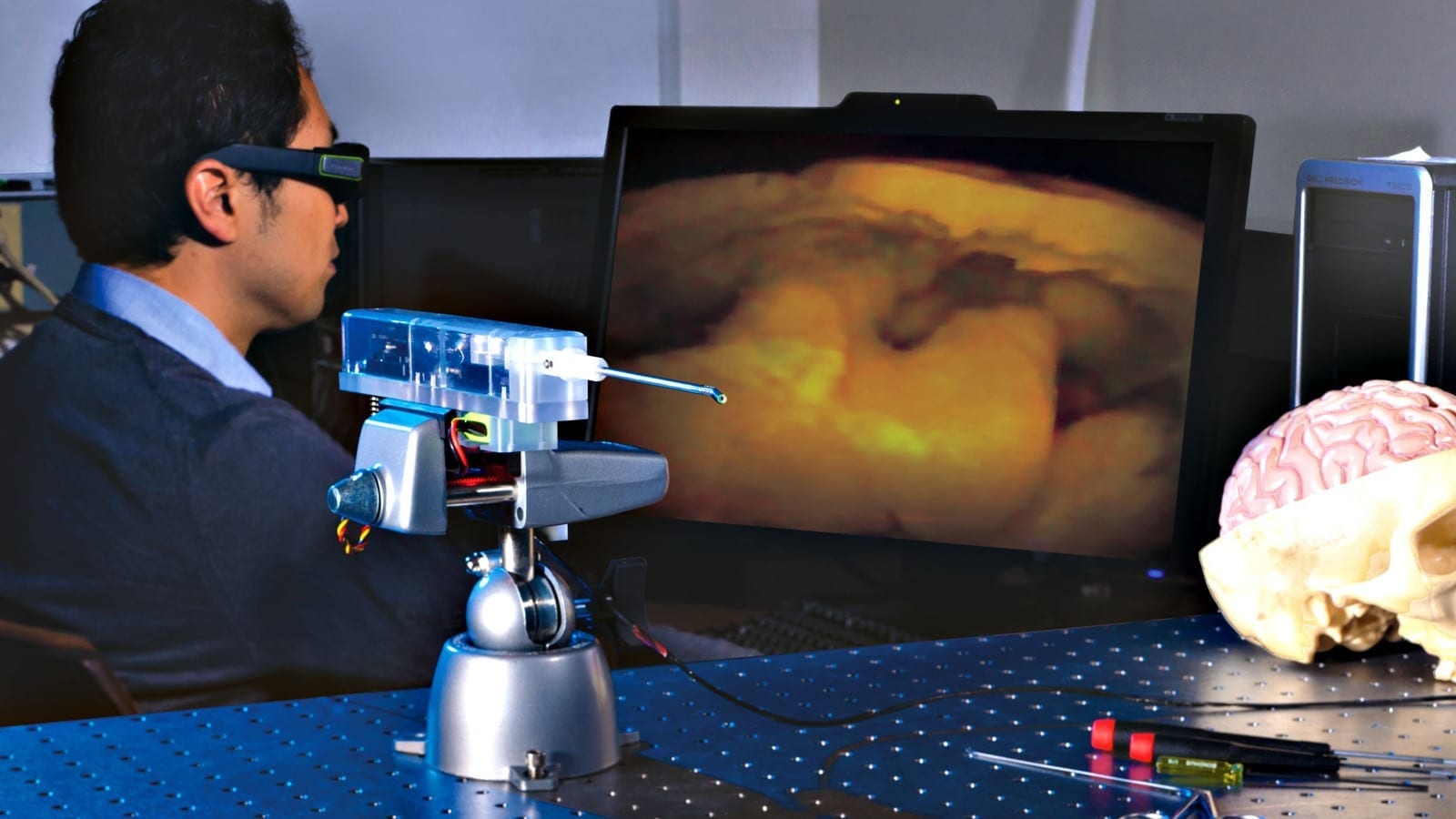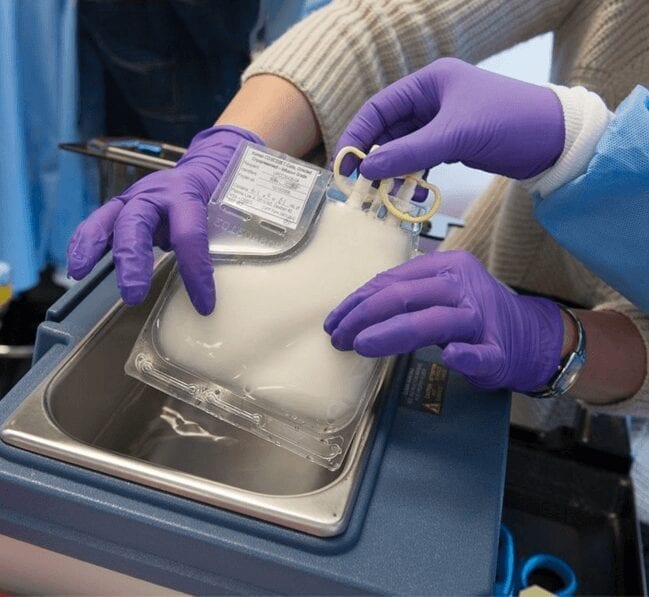
For those most severely affected, treating epilepsy means drilling through the skull deep into the brain to destroy the small area where the seizures originate – invasive, dangerous and with a long recovery period.
Five years ago, a team of Vanderbilt engineers wondered: Is it possible to address epileptic seizures in a less invasive way? They decided it would be possible. Because the area of the brain involved is the hippocampus, which is located at the bottom of the brain, they could develop a robotic device that pokes through the cheek and enters the brain from underneath which avoids having to drill through the skull and is much closer to the target area.
To do so, however, meant developing a shape-memory alloy needle that can be precisely steered along a curving path and a robotic platform that can operate inside the powerful magnetic field created by an MRI scanner.
The engineers have developed a working prototype, which was unveiled in a live demonstration this week at the Fluid Power Innovation and Research Conference in Nashville by David Comber, the graduate student in mechanical engineering who did much of the design work.
The business end of the device is a 1.14 mm nickel-titanium needle that operates like a mechanical pencil, with concentric tubes, some of which are curved, that allow the tip to follow a curved path into the brain. (Unlike many common metals, nickel-titanium is compatible with MRIs). Using compressed air, a robotic platform controllably steers and advances the needle segments a millimeter at a time.
According to Comber, they have measured the accuracy of the system in the lab and found that it is better than 1.18 mm, which is considered sufficient for such an operation. In addition, the needle is inserted in tiny, millimeter steps so the surgeon can track its position by taking successive MRI scans.
According to Associate Professor of Mechanical Engineering Eric Barth, who headed the project, the next stage in the surgical robot’s development is testing it with cadavers. He estimates it could be in operating rooms within the next decade.
The Latest on: Robotic brain surgery
[google_news title=”” keyword=”Robotic brain surgery” num_posts=”10″ blurb_length=”0″ show_thumb=”left”]
via Google News
The Latest on: Robotic brain surgery
- HMC successfully manages doing first robotic kidney transplant in Qataron April 27, 2024 at 1:12 am
Hamad Medical Corporation (HMC) succeeded in performing the first robotic kidney transplant surgery in Qatar for a patient in his seventies.The patient ...
- ACIBADEM Launches Online Second Medical Opinion Initiative, Revolutionizing Medicla Online Consultationson April 26, 2024 at 10:53 am
ACIBADEM Hospitals is a premier Turkey-based provider of full-spectrum healthcare services with an international scope of operations. The ...
- Robotic nerve 'cuffs' could help treat a range of neurological conditionson April 26, 2024 at 2:00 am
Researchers have developed tiny, flexible devices that can wrap around individual nerve fibers without damaging them.
- First robotic kidney transplant surgery in Qatar successfully performed by Hamad Medical Corporationon April 24, 2024 at 9:40 am
The surgical procedure was successfully performed using the Da Vinci robot and took only two and a half hours.
- HMC Succeeds In Performing First Robotic Kidney Transplant In Qataron April 24, 2024 at 6:00 am
Hamad Medical Corporation succeeded in performing the first robotic kidney transplant surgery in Qatar for a patie ...
- MIT Technology Reviewon April 19, 2024 at 3:00 am
In the world of brain-computer interfaces, it can seem as if one company sucks up all the oxygen in the room. Last month, Neuralink posted a video to X showing the first human subject to receive its ...
- We Finally Know Where Neuralink’s Brain Implant Trial Is Happeningon April 18, 2024 at 2:32 pm
After months of secrecy, Neuralink revealed that the partner site for its brain implant study is the Barrow Neurological Institute.
- Brain chip development occurs at the expense of disabled peopleon April 17, 2024 at 7:16 pm
Additionally, the company has not positioned their BCIs to complement traditional and low-cost support systems or accommodations available to quadriplegic people, such as accessible public ...
- Chinese company create humanoid robot with AI "brain"on April 4, 2024 at 5:00 pm
Chinese tech company Unitree Robotics have created a revolutionary humanoid robot with a highly sophisticated AI "brain ... team-mate following open heart surgery update 7 things you should ...
- Chinese researchers claim monkey brain advance after moving robotic arm with its mindon May 7, 2023 at 7:47 pm
It works by using sensors that detect and capture brain activity and then convert those signals into commands that can control an external device, such as a computer cursor or a robotic arm.
via Bing News










